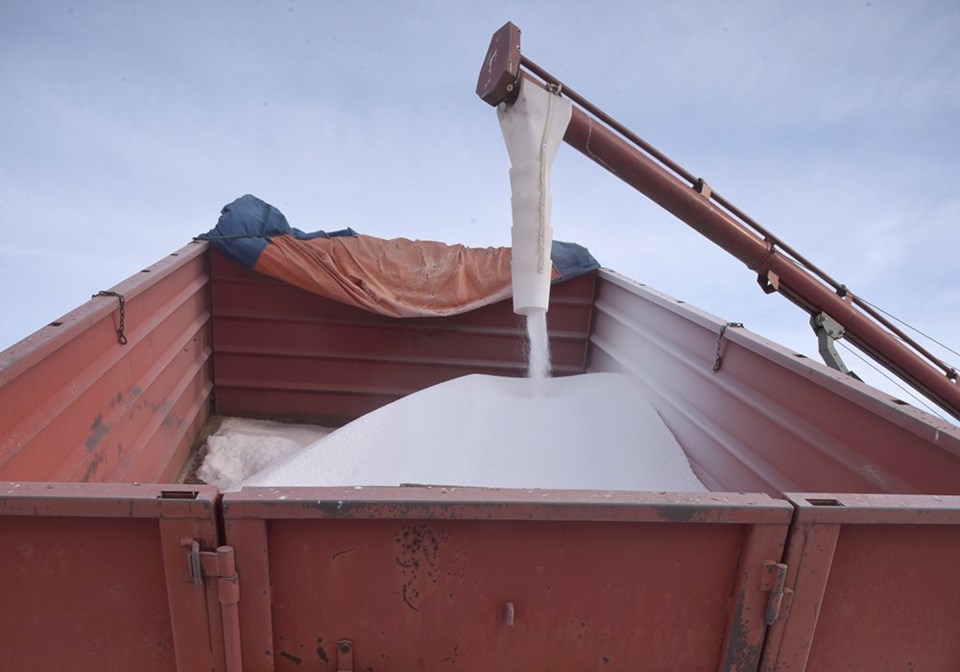The government amended the fertilizer regulations so companies could register a product without having to prove efficacy.
“This change enables the CFIA to focus on verifying the safety of fertilizers and supplements, and will strengthen industry’s leadership role in quality assurance and verification,” the feds said at the time. “It will also provide industry with greater flexibility, reduced costs and less red tape.”
The comment about reduced red tape was likely correct.
However, when it comes to biological products, the part about industry policing itself remains a work in progress. Some companies, especially new entrants, continue to make bold claims about their products.
“I’ve seen some presentations where … the guy is talking about taking available phosphorus to 400 parts per million. Nothing is going to do that — ever,” said Jon Treloar, an agronomist with Novozymes in Saskatoon. “I’ve heard some wild claims from companies. ‘Put this on and you’re off to the promised land.’ That hurts the whole (biologicals) industry.”
Treloar shared his thoughts on the state of the bio-stimulant industry during a presentation at the Farm Forum Event, a virtual conference held early December. In his 32 minute talk, Treloar discussed the use of biological products and barriers to adoption.
He focused mostly on bio-stimulants.
The Nutrien Ag Solutions website defines bio-stimulants this way: “Substances or micro-organisms whose function … is to stimulate natural processes to benefit nutrient uptake, nutrient use efficiency, tolerance to abiotic stress and crop quality.”
Products include bacteria and microbial inoculants and natural products such as seaweed extracts.
Novozymes makes and markets JumpStart, a popular bio-stimulant used on farms across Canada. The company is just one of many players in a booming market for biologicals. Fortune Business Insights has predicted the global market for bio-stimulants will hit US $5.3 billion in 2027, up from $2.5 billion in 2019.
Demand is growing because farmers are looking to boost yields, cut fertilizer costs or comply with new regulations around the use of phosphorus and nitrogen.
In Canada, the federal government has proposed to cut greenhouse gas emissions from fertilizer use to 30 percent below 2020 levels. If that happens, farmers may be forced to reduce their use of nitrogen.
“The regulatory environment is demanding new solutions for (ag) production,” Treloar said.
“We’re pretty far away from that (in Canada), but we’re probably not as far away as we think.”
Regulation and rising fertilizer prices should encourage more use of bio-stimulants, but there’s at least one barrier holding back adoption: an absence of third-party data. In other words, there’s little information on what works and what doesn’t.
“It really is a buyer beware environment right now. We don’t have a strong extension from any level of government right now, or to some degree, universities as well…. The universities have pulled back on extension,” Treloar said.
“A lot of the data now comes from the companies selling these products.”
Few, if any, publicly funded researchers are studying the efficacy of biological products, although on-farm research networks could be a possible answer for filling the void.
Manitoba Pulse & Soybean Growers operates such a network. Members test new products and practices — such as a fungicidal seed treatment for peas or increasing the seeding rates for soybeans — to assess what works and what doesn’t.
A similar network on the Prairies, maybe for cereal crops, could study the efficacy of bio-stimulants in wheat, barley and other crops. However, there are dozens of products on the market, so a single organization wouldn’t have time to test every biological product.
One group in Alberta, Farming Smarter, is now conducting research on bio-stimulants. The non-profit based in Lethbridge helps farmers make “informed choices around inputs, technology and management practices for their operation,” its website says.
In 2020, Farming Smarter initiated a three-year study on bio-stimulants to test the efficacy of a range of products on a rotation of canola, peas and wheat. The researchers are measuring plant height, biomass, vigour and of course yield to gather data on bio-stimulant performance.
The project wraps up in 2023.
Data from an independent body such asFarming Smarter should help farmers and agronomists make decisions about biologicals.
“We want to make sure when we’re making these recommendations, it’s in the best interest of the producer,” said Martin Carr, agronomy manager with WinField United Canada, who participated in Treloar’s video presentation on biologicals.
Agronomists need answers to questions such as, what conditions are optimal for biological products?
“If we know it works really well in cool environments and we see a cool spring coming, this is where we would (possibly) recommend it,” Carr said.
More testing data should help, but bold claims and promises about bio-stimulants will likely continue because new players and companies continue to enter the market.
“I think it (the industry) will police itself, after a while,” Treloar said.
“As biologicals become more of that mainstream (agriculture) conversation, the riff raff will get sorted out.”

